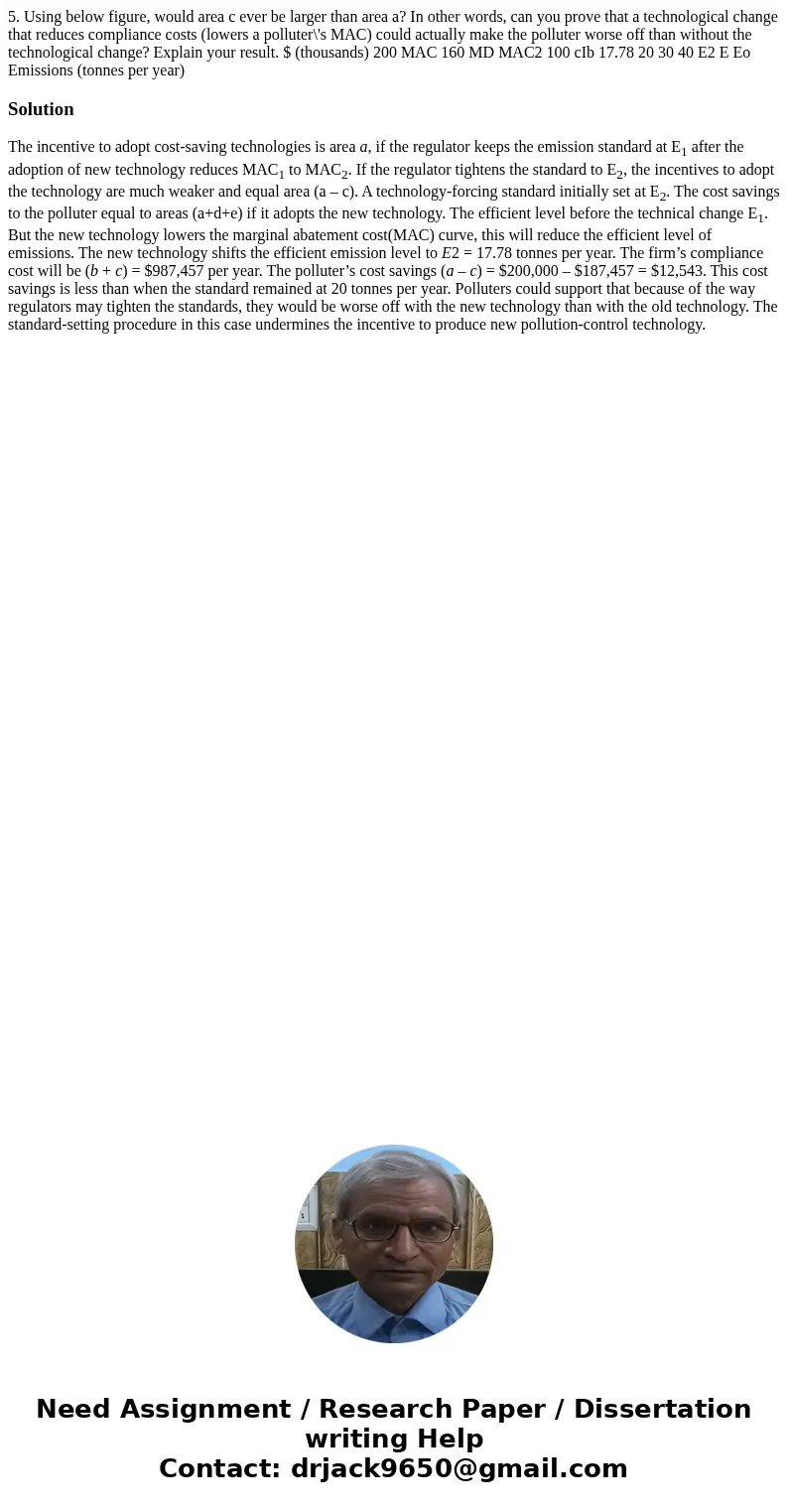5 Using below figure would area c ever be larger than area a
Solution
The incentive to adopt cost-saving technologies is area a, if the regulator keeps the emission standard at E1 after the adoption of new technology reduces MAC1 to MAC2. If the regulator tightens the standard to E2, the incentives to adopt the technology are much weaker and equal area (a – c). A technology-forcing standard initially set at E2. The cost savings to the polluter equal to areas (a+d+e) if it adopts the new technology. The efficient level before the technical change E1. But the new technology lowers the marginal abatement cost(MAC) curve, this will reduce the efficient level of emissions. The new technology shifts the efficient emission level to E2 = 17.78 tonnes per year. The firm’s compliance cost will be (b + c) = $987,457 per year. The polluter’s cost savings (a – c) = $200,000 – $187,457 = $12,543. This cost savings is less than when the standard remained at 20 tonnes per year. Polluters could support that because of the way regulators may tighten the standards, they would be worse off with the new technology than with the old technology. The standard-setting procedure in this case undermines the incentive to produce new pollution-control technology.

 Homework Sourse
Homework Sourse